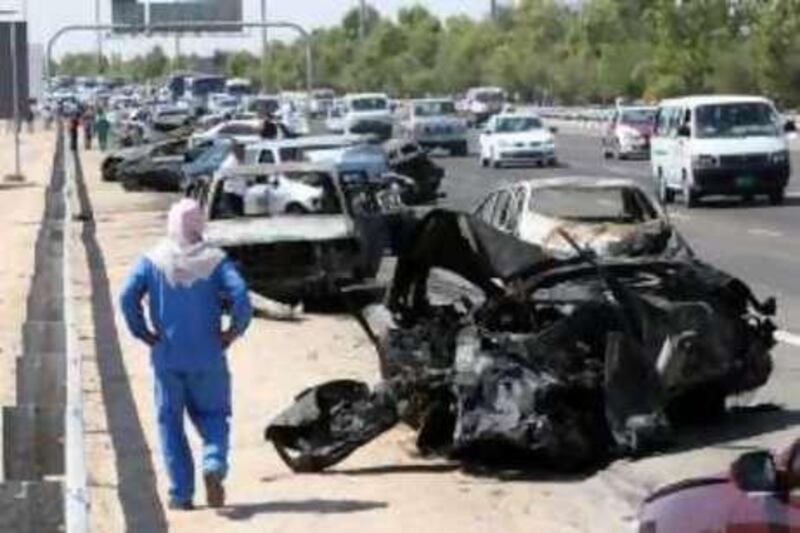ABU DHABI // Low-voltage floodlights that penetrate fog are planned for sections of Abu Dhabi's motorways, according to a police safety official. Installing "smart floodlights" was one of a number of initiatives to come out of a study by the Department of Transport, Abu Dhabi Municipality and Abu Dhabi police, said Lt Ahmed al Hajeri, of Abu Dhabi Police's public safety department. Closed-circuit cameras would also be set up on the Abu Dhabi-Dubai and Abu Dhabi-Al Ain highways, where "all the terrible accidents occur", so emergency services could respond quickly when crashes happen, Lt Hajeri said.
Cameras are already installed on motorways in Sharjah and Dubai, but there are none between Anu Dhabi and Jebel Ali, Lt Hajeri said. Thick fog can settle quickly on the emirate's roads in the early morning, particularly during October, November, February and March. A 200-car crash in foggy conditions in March on the motorway between Abu Dhabi and Dubai killed four and hurt more than 350 others. Poor visibility and reckless driving were blamed for the crashes.
Some drivers would also be warned of fog via text message, he said. The message would give the location of the fog, its thickness and a recommended driving speed. Weather bulletins, which also include rain and dust warnings, are already provided to police by the national centre for meteorology and seismology, he said. Police would also patrol the highways to escort motorists during hazardous weather conditions, ensuring they drive at a safe speed between 40kph and 60kph, depending on the thickness of the fog.
Directional, warning and speed limit signs would be refurbished and more added, Lt Hajeri said. A large sign would be erected at the scene of the March accident near Ghantoot as a reminder to motorists. Abu Dhabi's plans come after the Roads and Transport Authority in Dubai announced it had published a leaflet to educate drivers on proper driving techniques in foggy conditions. The leaflet advises motorists to slow down gradually in fog, and to fit their vehicles with low-beam headlights to avoid the blinding reflection created by high-beam lamps.
If it is difficult to see, motorists are advised to park off the road and turn off their hazard lights, so as not to distract motorists who are still travelling and concentrating on the lanes ahead. Lt Hajeri said motorists continue to drive too fast in fog. Last month, Major Gen Mohammed al Awadhi Minhali, director general of police operations, said police have worked to improve communications with health, fire and rescue, and traffic authorities, following the accident.
Training scenarios have been prepared to ready emergency services for future crashes and a victim care centre created, he said. "People think they know how to drive in fog but really they don't," Lt Hajeri said. "They do not consider the consequences. They speed anyway." During foggy conditions, it is a common sight for drivers to turn on their hazard lights and continue to drive. However, some drivers carry on at high speeds, giving them little time to react should a stopped vehicle appear out of the mist.
Shabir Hamed, 45, who was cut and bruised when his car was written off in the crash in March, remembered motorists driving recklessly even as the fog settled on the E-11 highway. "The cars coming behind me, maybe no control," he said. "That is the problem." mchung@thenational.ae







